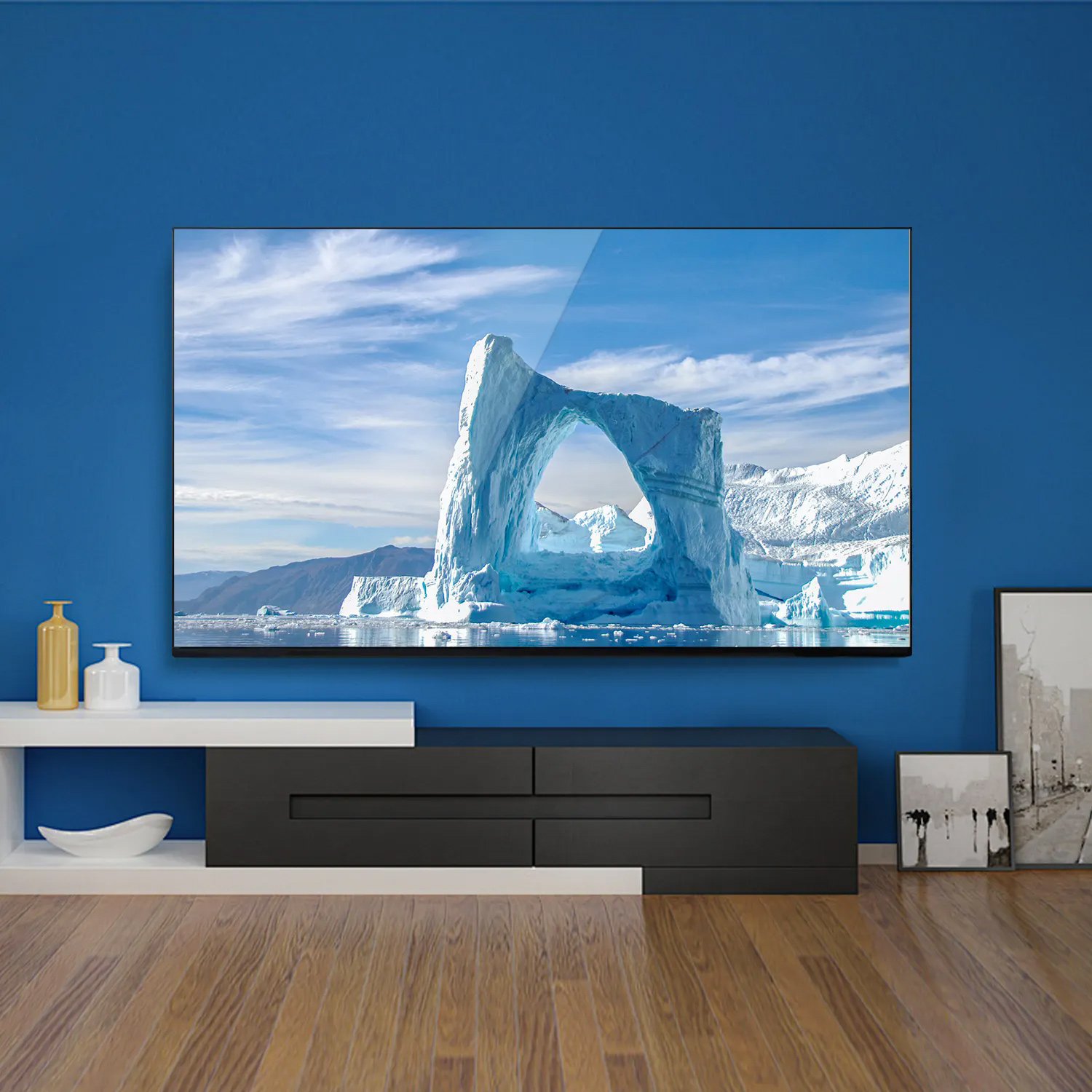-
Seamless Google Integration: Built-in access to Google services like Google Play Store, Google Assistant, YouTube, and Google Photos, enabling effortless synchronization with your Google account.
-
Vast App Ecosystem: Supports a wide range of apps via Google Play Store, including popular streaming platforms (Netflix, Disney+, Prime Video), music services, and productivity tools.
-
Google Cast Support: Allows easy screen mirroring or content casting from smartphones, tablets, or laptops to the TV using Chromecast technology.
-
Voice Control & AI Recommendations: Utilizes Google Assistant for voice commands (searching content, controlling playback, smart home devices) and offers personalized content suggestions based on viewing habits.
-
Regular Software Updates: Receives frequent Android TV OS updates, enhancing features, security, and compatibility with new apps/services.
-
Gaming & Cloud Streaming: Supports cloud gaming platforms like NVIDIA GeForce NOW and Xbox Cloud Gaming (via apps), turning the TV into a gaming hub.
-
Multi-Tasking Capability: Runs multiple apps simultaneously and supports split-screen functionality in some cases.
-
Smart Home Control: Acts as a hub for Google Home-enabled devices (lights, thermostats, cameras) through voice or interface.
-
User Profiles: Allows personalized experiences for different household members, with individual watchlists and recommendations.
-
Cross-Device Compatibility: Integrates smoothly with other Android devices, Wear OS, and third-party smart home ecosystems.
-
4K HDR & Dolby Support: Many models offer high-end audiovisual features like 4K resolution, HDR, and Dolby Atmos for premium viewing experiences.
-
Customizable Interface: The home screen can be tailored with preferred apps and content rows for quick access.
These features position Android Smart TV as a versatile, user-friendly platform for entertainment, productivity, and smart home management.

commercial advantages of Google Android Smart TV
1. Scalable Monetization Ecosystem
Android TV enables manufacturers and partners to generate revenue through:
- Google Play Store app sales/subscriptions (30% revenue share for paid apps/in-app purchases).
- Targeted advertising via Google AdMob and personalized recommendations (e.g., ads in free streaming apps or home screen banners).
- Premium content partnerships (e.g., pre-installed apps like Netflix or YouTube Premium driving subscription referrals).
Case Example: Sony’s Bravia Android TV series integrates Google’s ad-supported Free TV Channels (via Google TV), allowing Sony to share ad revenue while offering users free content. This model attracts budget-conscious consumers while creating a recurring revenue stream.
2. Reduced R&D Costs for Manufacturers
By adopting Android TV OS, brands avoid developing proprietary OS platforms. Google provides:
- Pre-built OS framework with regular updates.
- Certification programs (e.g., Netflix Recommended TV, Dolby Vision) to ensure compatibility with industry standards.
- AI-driven tools like Ambient Mode (turns idle TVs into smart displays for weather, calendars, or ads), reducing hardware innovation costs.
Case Example: TCL’s Android TV models leverage Google’s AI upscaling technology to deliver 4K-quality visuals on mid-range hardware. This allows TCL to compete with premium brands at lower production costs while marketing “AI-enhanced” features.
3. Enhanced Brand Loyalty Through Ecosystem Lock-In
Android TV strengthens customer retention by integrating with Google’s broader ecosystem:
- Cross-device synchronization (e.g., watch a YouTube video on TV, resume on a Pixel phone).
- Google One cloud storage upsells for backing up TV preferences and app data.
- Smart home dominance via Google Home, encouraging users to stay within the Google ecosystem for voice control.
Case Example: Philips Android TVs saw a 22% increase in repeat customers after promoting bundled deals with Google Nest speakers and YouTube Premium subscriptions, creating a sticky ecosystem.
4. Global Market Penetration
Android TV supports 100+ languages and adapts to regional content preferences, helping brands expand globally:
- Localized content hubs (e.g., JioTV in India, GloboPlay in Brazil preloaded on regional Android TVs).
- Affordable licensing fees for OEMs compared to proprietary systems like Samsung Tizen.
Case Example: Xiaomi’s Android TV lineup dominates in India (33% market share) due to partnerships with local streaming services (Hotstar, Zee5) and budget-friendly pricing enabled by Google’s scalable OS.
5. Data-Driven Product Innovation
Google aggregates anonymized user data (viewing habits, app usage) to help partners:
- Identify trends (e.g., rising demand for gaming apps → prioritize partnerships with Xbox Cloud Gaming).
- Optimize hardware specs (e.g., storage/RAM requirements based on average app usage).
Case Example: NVIDIA partnered with Google to launch GeForce NOW on Android TV, targeting the 18% of users who stream games weekly. Data showed peak usage during evenings, prompting NVIDIA to offer discounted nighttime subscriptions via TV pop-ups.
6. Competitive Differentiation via Customization
While Android TV provides a unified OS, brands can add unique software layers:
- Custom UIs (e.g., Hisense’s VIDAA skin for simplified navigation).
- Exclusive hardware-software bundles (e.g., Dolby Atmos soundbars optimized for Android TV’s audio codecs).
Case Example: Sony’s “360 Reality Audio” feature, exclusive to its Android TVs, boosted sales by 15% among audiophiles by marketing seamless integration with Tidal’s hi-res music service.
These commercial strengths make Android TV a low-risk, high-reward platform for OEMs, content providers, and advertisers, driving both market share growth and profitability.








